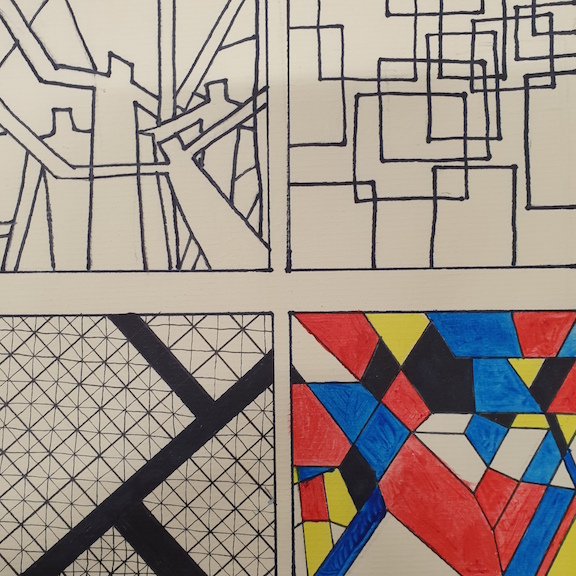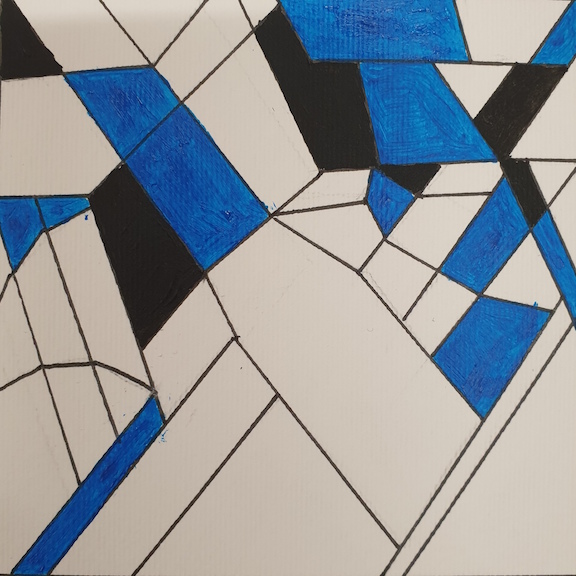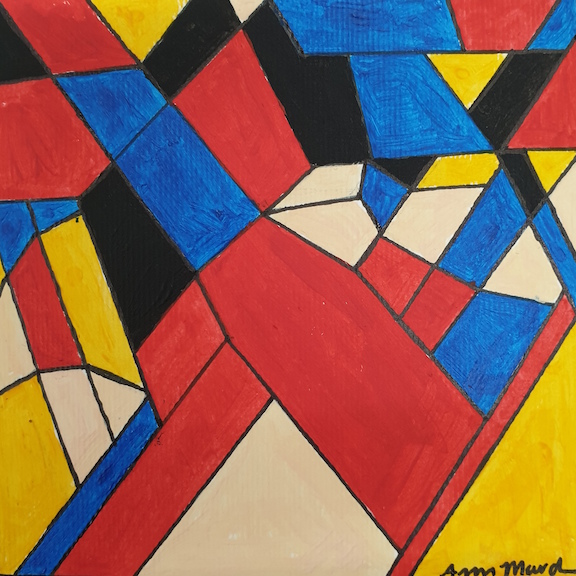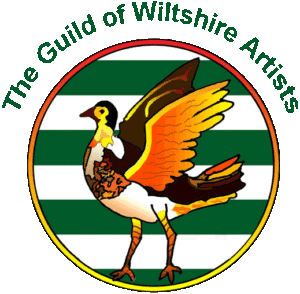The suggested theme for the Guild’s September monthly meeting was to create an abstract painting or drawing using only straight lines. Members brought their preferred mediums and armed with some innovative ideas set up to enjoy the evening.
Ahead of the evening Sonia sent out some suggesting links for members to do some research. These included the art or Theo van Doesburg and Piet Mondrian. Theo van Doesburg was a highly influential Dutch artist, architect, and writer known for co-founding the abstract art movement De Stijl (The Style). His body of work, which includes paintings, architectural designs, and typography, is characterized by its strict geometry, horizontal and vertical lines, and use of primary colors. Piet Mondrian was a Dutch painter and influential theorist of modern abstract art. He is most recognized as a founder of the De Stijl movement, and for his development of a non-representational style he called Neo-Plasticism. Mondrian’s work followed a methodical progression toward pure abstraction, influenced by his study of philosophy and other art movements.
Raised in the Netherlands, Mondrian began his career painting traditional, realistic landscapes in the Dutch Impressionist style, including detailed scenes of fields, windmills, and trees. Around 1908, his work evolved to include Symbolist characteristics, partly due to his interest in Theosophy, a spiritual and philosophical movement. He believed that art could reveal the spiritual harmony underlying the natural world by reducing forms to their most basic elements. After moving to Paris in 1912, Mondrian was deeply influenced by Cubism. His paintings became increasingly fragmented and geometric, as seen in his series of abstracted trees, which deconstructed the subject into lines and interlocking planes. Remaining in the Netherlands during World War I, Mondrian co-founded the De Stijl movement with artist Theo van Doesburg in 1917. Through this movement, he developed Neo-Plasticism, a highly simplified, non-objective style focused on creating “universal beauty”. He famously restricted his art to the following elements:
1. Horizontal and vertical lines
2. The three primary colors: red, yellow, and blue
3. The three primary values: black, white, and and gray
Attention was also drawn to the art of Bridget Riley whose artwork is defined by her pioneering contributions to the Op Art movement, using precise geometric patterns and contrasting colors to create powerful optical illusions of movement, vibration, and depth. Her work has evolved from early black-and-white compositions to vibrant, colour-saturated canvases
Sonia chose collage for her experiments, producing 3 panels using background papers and linear elements.
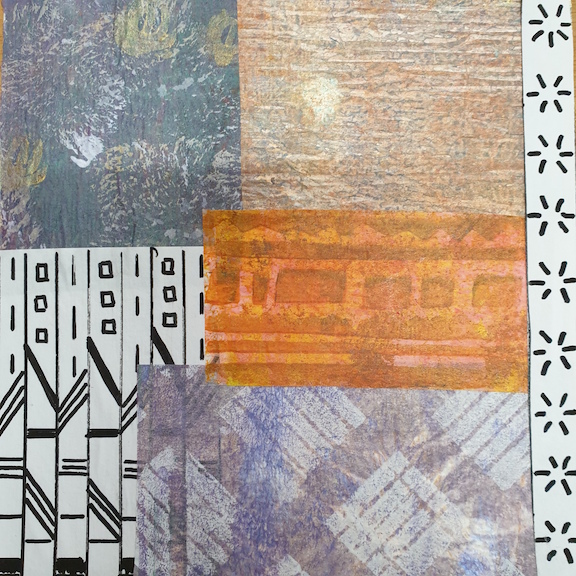
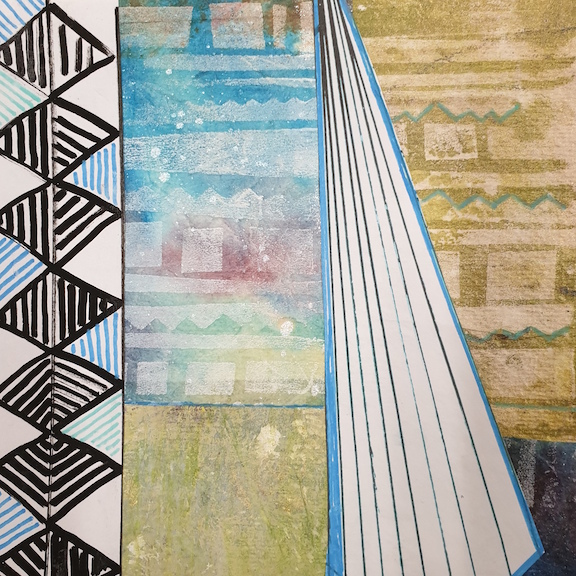
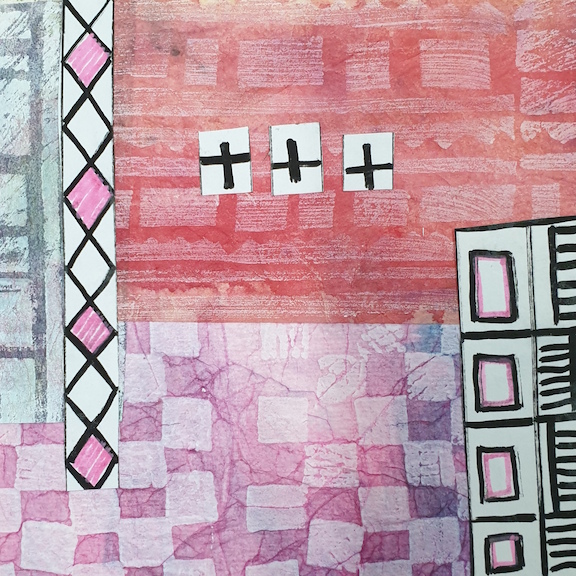
Jim worked with Derwent iridescent pencils on black paper, constructing an intricate pattern of lines.
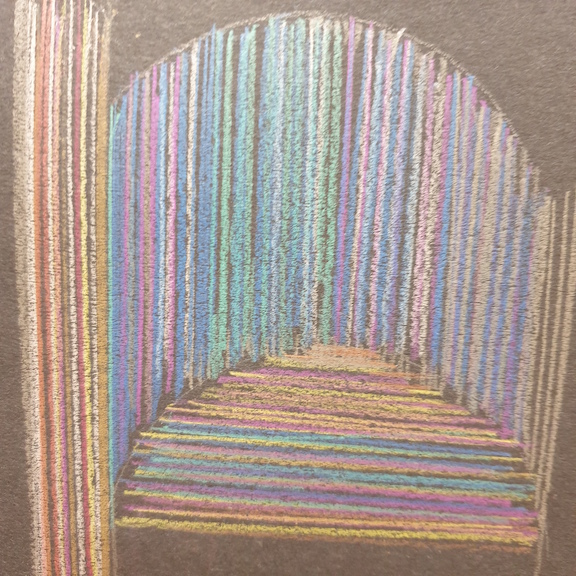
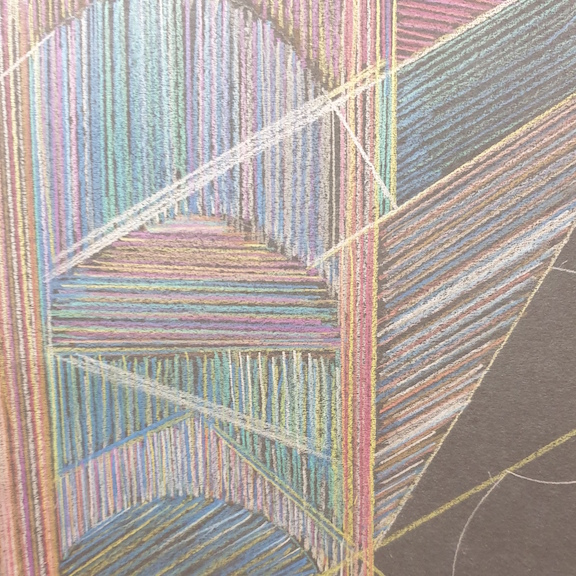
Mike and Jenny worked with watercolours.
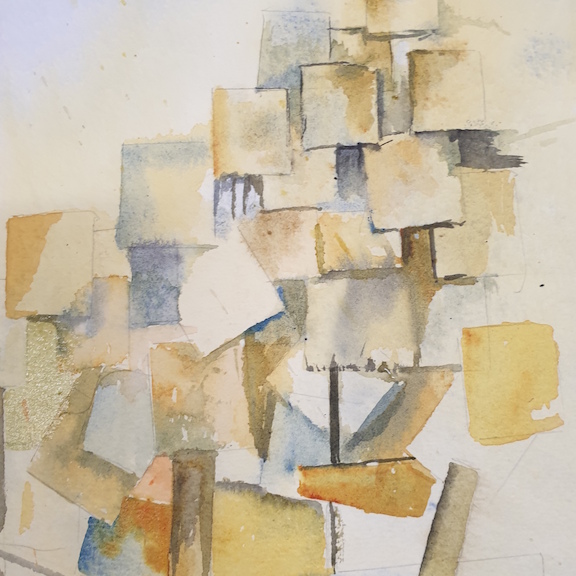
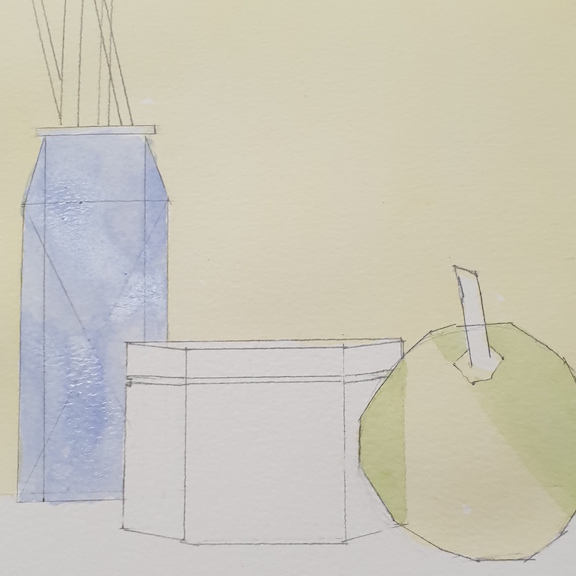
Joy constructed an abstracted landscape using acrylics.
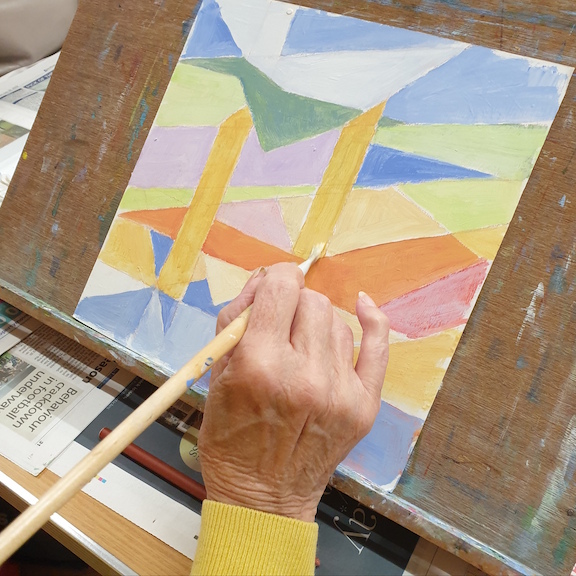
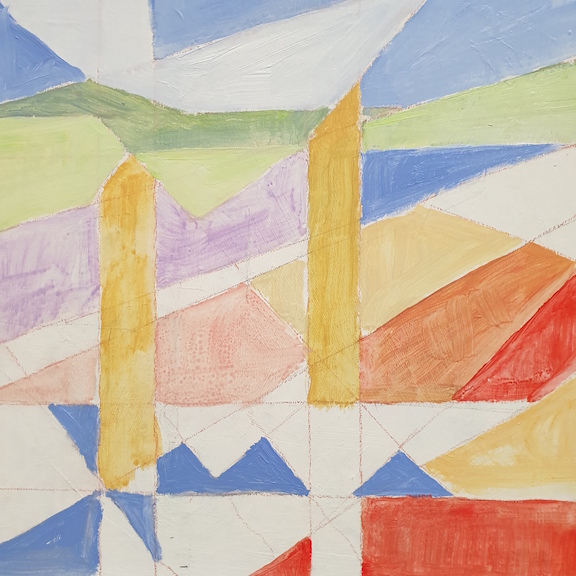
Ann modelled her Seated Woman on the principles of Neo-Plasticism using acrylic.
